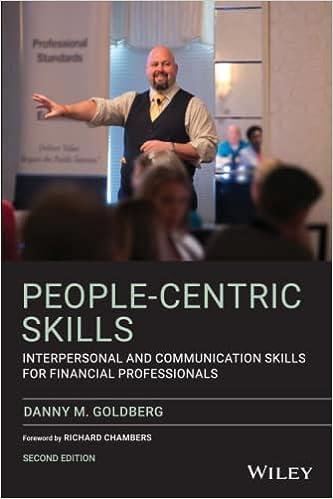CASE 8.1 Longtop Financial Technologies Limited In 1996, two friends and business partners, Jia Xiao Gong and Weizhou Lian, founded Longt f the board. Financial Technologies Limited in Beijing. Gong served as Longtop's chair- man o while Lian assumed the title of chief executive officer (CEO). The two men developed a business model intended to make Longtop the leading provider of information technology services to the booming banking industry of the People's Republic of China. China's "Big Four" banks dominate the nation's bank- ing industry. In turn, the powerful Ministry of Finance, the government agency that oversees China's economic and fiscal policies, controls the Big Four banks. By 2010, Longtop had achieved its goal of becoming the leading provider of information technology services to China's banking industry, including three of the nation's Big Four banks. The company's audited financial statements for fiscal 2010 reported a $59 million profit, total revenues of $169 million, and net assets of $600 million. Although modest by U.S. standards Longtop's profits, revenues, and net assets were growing rapidly and were expected to continue to do so over the years to come. Similar to the previous five years, Deloitte & Touche Shanghai (D & T Shanghai), the Chinese affiliate of U.S.-based Deloitte Touche Tohmatsu, issued an unqualified audit opinion on Longtop's 2010 financial statements "Faked" Cash and Red-Faced Auditors The rapidly expanding Chinese economy has captured the attention of investors worldwide over the past two decades. Companies such as Longtop sought to capi- talize on the growing interest in the Chinese economy by listing their securities on international stock exchanges, including the leading exchanges in the United States. In October 2007, Longtop went public with an initial public offering (IPO) managed by Goldman Sachs and Deutsche Bank. The company's common stock, which was listed on the New York Stock Exchange (NYSE), nearly doubled in price during its first day of trading. By late 2010, Longtop's stock had a total market value of $2.5 billion. Similar to the more than 200 other Chinese companies whose securities have traded on U.S. stock exchanges, Longtop became subject to the regulatory oversight of the Securities and Exchange Commission (SEC) when it listed its common stock on the NYSE In the late spring of 2011, Longtop was rocked by allegations that management had recorded bogus revenues to inflate the company's reported operating results and financial condition. Those allegations surfaced just as D& T Shanghai was near-ing completion of its Longtop audit for the company's 2011 fiscal year, which ended 31 March 2011 The source of the claims of fraudulent accounting was a small U.S.-based investment advisory firm that specializes in exposing companies that are "cooking their books." Among other allegations, that firm maintained that much, if not most, of the more than $400 million of cash reported in Longtop's preaudit 2011 financial statements-which accounted for almost 60 percent of the company's total assets- did not exist. CASE 8.1 Longtop Financial Technologies Limited In 1996, two friends and business partners, Jia Xiao Gong and Weizhou Lian, founded Longt f the board. Financial Technologies Limited in Beijing. Gong served as Longtop's chair- man o while Lian assumed the title of chief executive officer (CEO). The two men developed a business model intended to make Longtop the leading provider of information technology services to the booming banking industry of the People's Republic of China. China's "Big Four" banks dominate the nation's bank- ing industry. In turn, the powerful Ministry of Finance, the government agency that oversees China's economic and fiscal policies, controls the Big Four banks. By 2010, Longtop had achieved its goal of becoming the leading provider of information technology services to China's banking industry, including three of the nation's Big Four banks. The company's audited financial statements for fiscal 2010 reported a $59 million profit, total revenues of $169 million, and net assets of $600 million. Although modest by U.S. standards Longtop's profits, revenues, and net assets were growing rapidly and were expected to continue to do so over the years to come. Similar to the previous five years, Deloitte & Touche Shanghai (D & T Shanghai), the Chinese affiliate of U.S.-based Deloitte Touche Tohmatsu, issued an unqualified audit opinion on Longtop's 2010 financial statements "Faked" Cash and Red-Faced Auditors The rapidly expanding Chinese economy has captured the attention of investors worldwide over the past two decades. Companies such as Longtop sought to capi- talize on the growing interest in the Chinese economy by listing their securities on international stock exchanges, including the leading exchanges in the United States. In October 2007, Longtop went public with an initial public offering (IPO) managed by Goldman Sachs and Deutsche Bank. The company's common stock, which was listed on the New York Stock Exchange (NYSE), nearly doubled in price during its first day of trading. By late 2010, Longtop's stock had a total market value of $2.5 billion. Similar to the more than 200 other Chinese companies whose securities have traded on U.S. stock exchanges, Longtop became subject to the regulatory oversight of the Securities and Exchange Commission (SEC) when it listed its common stock on the NYSE In the late spring of 2011, Longtop was rocked by allegations that management had recorded bogus revenues to inflate the company's reported operating results and financial condition. Those allegations surfaced just as D& T Shanghai was near-ing completion of its Longtop audit for the company's 2011 fiscal year, which ended 31 March 2011 The source of the claims of fraudulent accounting was a small U.S.-based investment advisory firm that specializes in exposing companies that are "cooking their books." Among other allegations, that firm maintained that much, if not most, of the more than $400 million of cash reported in Longtop's preaudit 2011 financial statements-which accounted for almost 60 percent of the company's total assets- did not exist












